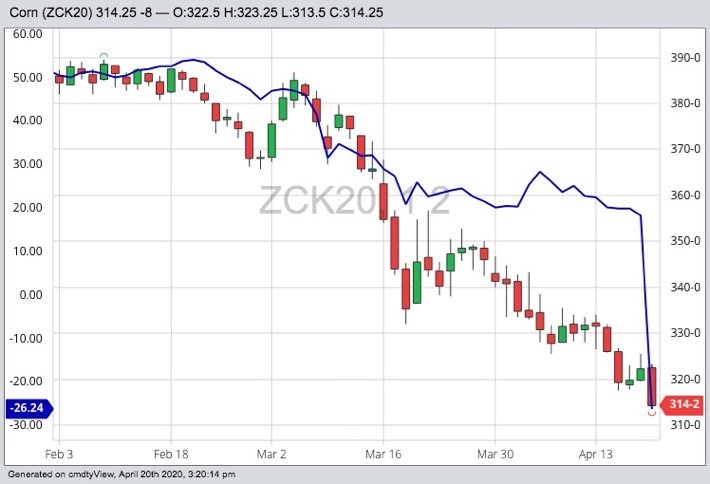Chicago | Reuters — Chicago Board of Trade corn futures sagged 2.6 per cent to its lowest since September 2019, with a plunging crude oil market slashing demand for ethanol, traders said.
Soybean futures also were lower, hitting a one-month low on pressure from cratering demand for energy amid the coronavirus pandemic.
“Anything that had any sort of exposure to energy today was under pressure,” said Ted Seifried, chief market strategist for Zaner Ag Hedge. “The biggest takeaway from today is the sharp reminder that we have really lost a significant amount of demand for energies during this lockdown. In the near term you are going to see ethanol production continue to fall.”
Read Also

Alberta crop conditions improve: report
Varied precipitation and warm temperatures were generally beneficial for crop development across Alberta during the week ended July 8, according to the latest provincial crop report released July 11.
But wheat futures rallied on hopes for increased exports, with export curbs expected in Black Sea production countries.
Some forecasts for good planting weather in the U.S. Midwest added pressure to corn.
CBOT May corn settled down eight cents at $3.14-1/4 a bushel (all figures US$). On a continuous basis, the most-active contract bottomed out at $3.13-1/2 a bushel, its lowest since hitting $3.10 a bushel on Sept. 21, 2009.
The U.S. Agriculture Department’s weekly crop progress report, which will be released at 3 p.m. CT, was expected to show that farmers had completed seven per cent of their corn planting as of April 19.
CBOT July soybean futures were six cents lower at $8.36-1/4 a bushel.
U.S. crude oil futures turned negative on Monday for the first time in history as storage space was filling up, discouraging buyers as weak economic data from Germany and Japan cast doubt on when fuel consumption will recover.
CBOT July soft red winter wheat futures were up 13-3/4 cents at $5.47-1/2, ending well below their session high of $5.61-1/2 as the sell-off in crude sparked worries about the global economy.
“The triggering mechanism for wheat was the export bans coming in for Black Sea wheat,” said Jim Gerlach, president of A/C Trading. “It looks like there will be about six weeks or so of no Black Sea exports.”
Russia’s deputy agriculture minister Oksana Lut said on Friday the country will suspend exports until July 1 once its second-quarter export quota is exhausted, which is expected to happen in mid-May.
Ukraine, another major supplier, is ready to ban wheat exports if sales exceed limits agreed with traders, the deputy economy minister in charge of agriculture said last week.
— Mark Weinraub is a Reuters commodities correspondent in Chicago; additional reporting by Gus Trompiz in Paris and Colin Packham in Sydney.














